Do you struggle with cooking rice? So many people say it is one of the hardest things they master in the kitchen. Why? Because the same cooking techniques can’t be applied across all types of rice. In fact, the same techniques can’t even be applied to all types of just white rice!

Oh rice, sometimes it is too mushy, other times not cooked enough. I’ve used rice cookers, stove tops, pressure cookers and more, however I’ve found a few tips on how to make the perfect rice each and every time and now I am sharing them with my foodie friends.
Throughout the entire world, rice is used in cuisine in very different ways. In Japan, you’ll see sticky rice and sushi rice. In Italy, risotto. Middle eastern cultures make tahdig, a dish known for a perfectly browned bottom and mix of crispy rice and soft rice.
So never again say “it’s just rice”.
What are the Types of Rice?
The first thing to understand is that there isn’t just one type of rice. There are literally thousands of types of rice. The main categories of rice are short grain and long grain rice as well as wild rice, brown rice and white rices.
There are several types of white rice, each with its own unique characteristics and uses. Here are some commonly recognized types of white rice:
- Long-Grain White Rice: This rice has long, slender grains that stay separate and fluffy when cooked. It’s commonly used in dishes like pilaf, stir-fries, and as a side dish.
- Medium-Grain White Rice: Medium-grain rice is slightly shorter and plumper than long-grain rice. It tends to be slightly sticky when cooked, making it suitable for dishes like risotto, sushi, and rice pudding.
- Short-Grain White Rice: Short-grain rice has short, almost round grains that are very starchy and tend to stick together when cooked. It’s ideal for dishes like sushi, paella, and creamy rice puddings.
- Jasmine Rice: Jasmine rice is a fragrant, long-grain rice with a subtle floral aroma. It’s commonly used in Asian dishes, especially Thai cuisine, due to its fragrance and slightly sticky texture when cooked.
- Basmati Rice: Basmati rice is another aromatic long-grain rice, known for its distinct nutty fragrance. It’s often used in Indian, Middle Eastern, and Persian cuisine and pairs well with spicy or heavily seasoned dishes.
- Arborio Rice: Arborio rice is a short-grain rice variety, essential for making creamy risotto. It has a high starch content, which is released during cooking, creating the creamy consistency that makes risotto so popular.
- Calrose Rice: Calrose rice is a medium-grain rice variety commonly used in the United States, particularly in California. It’s often used in dishes like sushi and other Asian-inspired recipes.
- Sticky Rice (Glutinous Rice): Sticky rice is a short-grain rice variety that becomes exceptionally sticky and chewy when cooked. It’s popular in Southeast Asian cuisine, especially for dishes like mango sticky rice and certain types of rice cakes.
- Converted Rice: Converted rice is parboiled before milling, which means it has been partially cooked and then dried. This process results in a firmer, less sticky grain that is less likely to become mushy when overcooked.
These are just a few examples of white rice varieties, each with its own unique characteristics and best-suited culinary applications. The choice of white rice type often depends on the specific dish you intend to prepare and your personal preferences for texture and flavor.
How to Cook Long Grain White Rice
Cooking long-grain white rice is a simple process that yields fluffy, separate grains. Here’s a basic stovetop method to cook long-grain white rice, including rice pilafs and the most general and common type of white rice in the United States.
- 1 cup long-grain white rice
- 2 cups water
- 1/2 teaspoon salt (optional)
- 1 tablespoon butter or oil (optional)
- Rinse the Rice: Place the rice in a fine-mesh strainer and rinse it under cold running water for a minute or two. Rinsing removes excess starch and can help prevent the rice from becoming too sticky.
- Measure the Water: Use a 2:1 ratio of water to rice. For 1 cup of rice, use 2 cups of water. If you prefer your rice a bit firmer, you can reduce the water slightly. Measure your water, do not add too much water or it can totally throw it off, this is not the time to eyeball it, water ratio is important.
- Bring to a Boil: In a medium-sized saucepan, combine the rinsed rice, water, and salt (if using). You can also add a small amount of butter or oil for added flavor, if desired. Stir briefly.
- Boil and Simmer: Place the saucepan over high heat and bring the mixture to a boil. Once it’s boiling, reduce the heat to low, cover the saucepan with a tight-fitting lid, and let the rice simmer.
- Simmer: Let the rice simmer for about 18-20 minutes. Keep the lid on to trap steam and cook evenly.
- Check for Doneness: After 18-20 minutes, remove the saucepan from heat but keep the lid on. Let the rice sit undisturbed for about 5 minutes. This allows any remaining steam to finish cooking the rice.
- Fluff with a Fork: After resting, remove the lid and use a fork to fluff the rice gently. This helps separate the grains.
- Serve: Your long-grain white rice is ready to serve as a side dish, in stir-fries, or as a base for various dishes.
Remember that cooking times may vary slightly depending on your specific stovetop and the exact type of rice you’re using. Always refer to the package instructions for any specific guidance related to the brand or type of long-grain white rice you have.
How to Cook Medium Grain White Rice & Short Grain Rice
Cooking medium-grain white rice is quite similar to cooking long-grain white rice, but medium-grain rice tends to be slightly stickier. In fact, risotto is the exception to this rule and is downright creamy. See our risotto recipes for instructions.Medium grain and short grain rices are cooked the same way.
Here’s a basic stovetop method to cook medium-grain white rice:
- 1 cup medium-grain white rice/short grain white rice
- 2 cups water
- 1/2 teaspoon salt (optional)
- 1 tablespoon butter or oil (optional)
- Rinse the Rice: Like with long-grain rice, you can choose to rinse the rice under cold running water in a fine-mesh strainer for a minute or two. Rinsing removes excess starch and can help prevent the rice from becoming overly sticky, even though medium grain is generally stickier.
- Measure the Water: Use a 2:1 ratio of water to rice. For 1 cup of rice, use 2 cups of water. Adjust the water quantity slightly if you prefer firmer or softer rice. Remember the amount of water is important! Do not eyeball it!
- Bring to a Boil: In a medium-sized saucepan, combine the rinsed rice, water, and salt (if using). You can also add a small amount of butter or oil for flavor, if desired. Stir briefly.
- Boil and Simmer: Place the saucepan over high heat and bring the mixture to a boil. Once it’s boiling, reduce the heat to low, cover the saucepan with a tight-fitting lid, and let the rice simmer.
- Simmer: Allow the rice to simmer for about 15-18 minutes. Medium-grain rice typically cooks a bit faster than long-grain rice. Keep the lid on to trap steam and ensure even cooking.
- Check for Doneness: After 15-18 minutes, remove the saucepan from heat but keep the lid on. Let the rice sit undisturbed for about 5 minutes. This resting period allows any remaining steam to finish cooking the rice.
- Fluff with a Fork: After resting, remove the lid and use a fork to fluff the rice gently. This helps separate the grains.
- Serve: Your medium-grain white rice is ready to serve as a side dish, in rice bowls, or as a base for various dishes.
Medium-grain white rice is known for its slightly sticky texture, which makes it a good choice for dishes where the rice should hold together a bit, like sushi or rice pudding. Adjust the cooking time to your preference for how tender or sticky you want the rice to be. Always check the package instructions for any specific guidance related to the brand or type of medium-grain white rice you’re using.
Tips for Perfect White Rice
- Rinse. Rinse your rice in a colander with cold water before cooking. This removes all of the debris and surface starches, will prevent rice from getting mushy. Rinse until water runs clean.
- Test It. You might need to experiment with a brand of rice to get it just right. The package directions aren’t always correct. Generally, the sweet spot for cooking white rice is 1 cup of rice to 1 cup of water for short grain white rice or 1¼ cups water for long grain white rice.
- Quick Stir. Give your rice a quick stir to prevent clumping on the rice grains after adding to liquid, but do not continue to stir through the cooking process. stirring releases more starch and will leave you with mushy rice, not fluffy white rice.
- Correct Temp. Make sure you bring the rice and the liquid to a boil. This ensures the water it hot enough to create the steam needed to make your rice.
- Allow to Steam. Don’t peek! I know it is hard not to peek, but opening the lid lets the steam, which is the key to cooking rice, to escape.
- Check Texture. When you do check your rice at the end, press a grain between two of your fingers. It should be firm enough that the exterior holds together, but soft enough to mash with slight pressure.
- Fluff. Always fluff your rice with a fork. Stirring with a spoon naturally mashes it preventing you from the perfect fluffy rice.
- Rest Rice. Allow rice to sit, off heat, for at least 5 minutes after it is done. Just like meat, it needs to rest.
While I don’t use one, a rice cooker is also a great way to get fabulous rice! Any Asian chef will tell you that having will is as basic as having a stove. If you own an Instant Pot
, it also has a rice cooker function.
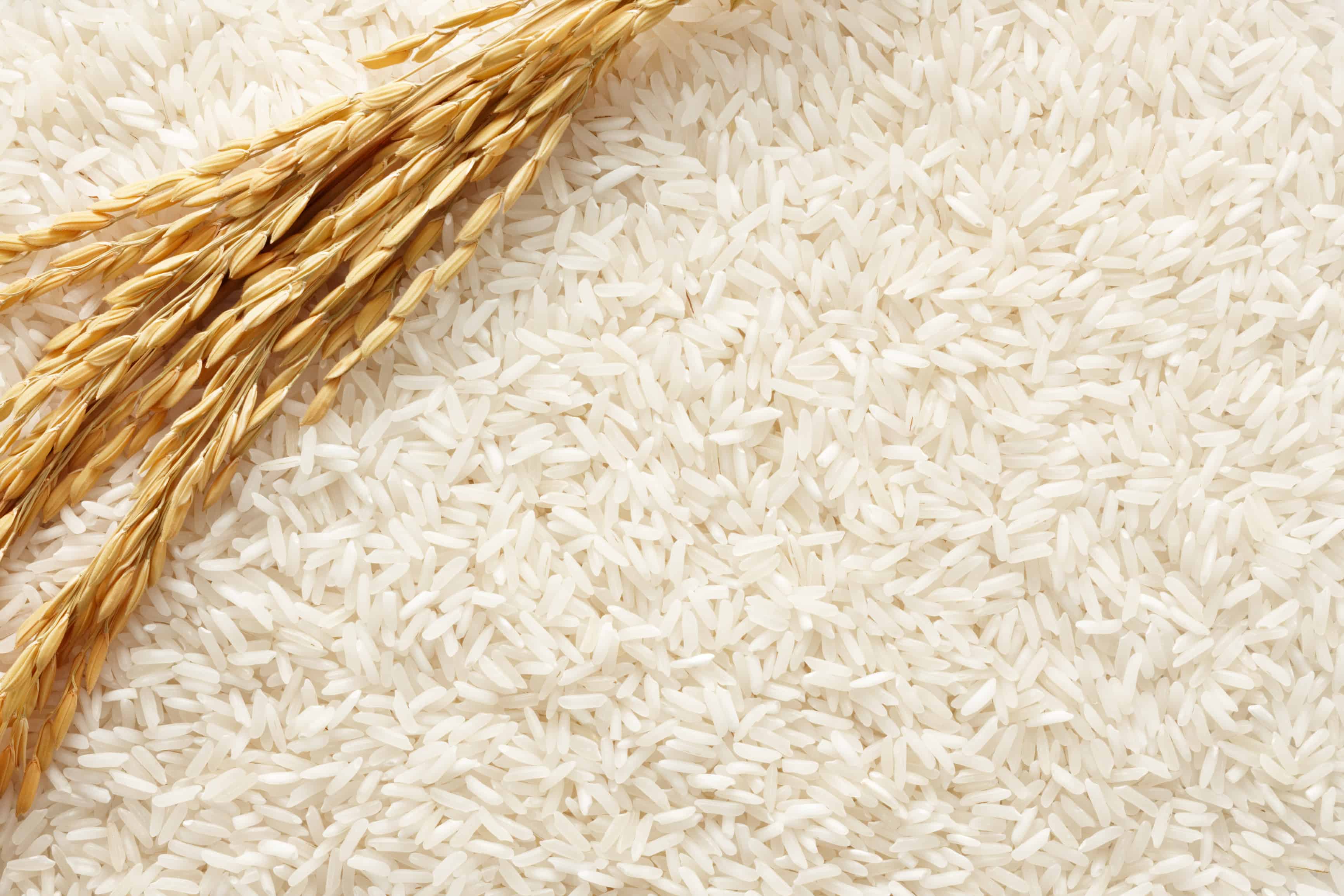
How to Store Leftover Rice
Store leftover rice in an airtight container in the refrigerator within two hours of cooking. Use it within 3-4 days and reheat thoroughly before consuming or use one of our leftover rice recipes below!
What to Do with Leftover Rice
Leftover rice is a versatile ingredient that can be transformed into delicious dishes. Here are some ideas for what to do with leftover rice:
- Fried Rice: Fried rice is a classic and flavorful way to use up leftover rice. Heat a skillet or wok, add some oil, vegetables, protein (like diced chicken, shrimp, or tofu), and your cooked rice. Season with soy sauce, garlic, ginger, and other seasonings for a quick and tasty meal.
- Rice Bowls: Create rice bowls with your choice of protein, vegetables, and sauces. You can make teriyaki chicken bowls, BBQ pulled pork bowls, or even vegetarian options with beans and salsa.
- Stuffed Bell Peppers: Use leftover rice as a filling for stuffed bell peppers. Mix it with ground meat, vegetables, tomato sauce, and spices. Stuff the peppers, bake until tender, and top with cheese. Or make variations like Mexican Stuffed Bell Peppers or Buffalo Chicken Stuffed Peppers.
- Rice Pudding: Turn your leftover rice into a creamy rice pudding by simmering it with milk, sugar, and vanilla. Add raisins, cinnamon, or nutmeg for extra flavor.
- Arancini: These Italian rice balls are a delicious snack or appetizer. Shape cold, leftover rice into balls, stuff them with cheese or meat, coat them in breadcrumbs, and deep-fry until golden brown.
- Rice Salad: Create a refreshing rice salad with leftover rice, chopped vegetables, herbs, and your choice of protein. Dress it with vinaigrette or a flavorful dressing for a satisfying cold dish.
- Rice and Bean Burritos: Make burritos or burrito bowls with leftover rice, beans, cheese, salsa, and your favorite toppings. Roll everything up in a tortilla or serve it in a bowl.
- Rice Soup: Add leftover rice to soups and stews for added thickness and heartiness. It works well in chicken and vegetable soups, providing a comforting texture. Wild Rice Soup or my Roasted Red Pepper Chicken Soup are great ideas.
- Rice Cakes: Combine leftover rice with beaten eggs, grated cheese, and herbs or spices. Shape the mixture into patties and pan-fry them until golden brown. Serve with a dipping sauce.
- Rice for Breakfast: Make a savory breakfast by reheating leftover rice and topping it with a fried or poached egg. Add some sautéed vegetables or salsa for extra flavor.
- Rice for Dessert: Mix rice with sweet ingredients like honey, cinnamon, and fruits for a simple dessert. Baked rice with sweet toppings can be a delightful treat.
Remember to store leftover rice in the refrigerator within two hours of cooking and consume it within 3-4 days. Reheat it thoroughly to kill any bacteria before using it in your chosen recipe. Be creative with your leftovers, and you’ll discover that rice can be a fantastic base for a variety of meals and snacks.
Delicious Rice Recipes
Stick of Butter Rice
Grandma Chiavetta’s Rice Dressing
Rice Pudding Recipe
Spanish Rice
Fiesta Rice
Cheesy Bacon Rice
Ranch Rice
Ginger Rice Recipe
Chinese Fried Rice (Restaurant Style)
Baked Rice Pilaf
Pineapple Fried Rice
Coconut Rice Recipe
Red Beans and Rice Recipe
Almond Rice Pilaf Recipe
Restaurant Style Mexican Rice Recipe
How to Cook White Rice on the Stovetop
Ingredients
- 1 cup long-grain white rice
- 2 cups water
- 1/2 teaspoon salt (optional)
- 1 tablespoon butter or oil (optional)
Instructions
- Place the rice in a fine-mesh strainer and rinse it under cold running water for a minute or two. Rinsing removes excess starch and can help prevent the rice from becoming too sticky.
- Use a 2:1 ratio of water to rice. For 1 cup of rice, use 2 cups of water. If you prefer your rice a bit firmer, you can reduce the water slightly.
- In a medium-sized saucepan, combine the rinsed rice, water, and salt (if using). You can also add a small amount of butter or oil for added flavor, if desired. Stir briefly.
- Place the saucepan over high heat and bring the mixture to a boil. Once it’s boiling, reduce the heat to low, cover the saucepan with a tight-fitting lid, and let the rice simmer.
- Let the rice simmer for about 18-20 minutes. Keep the lid on to trap steam and cook evenly.
- After 18-20 minutes, remove the saucepan from heat but keep the lid on. Let the rice sit undisturbed for about 5 minutes. This allows any remaining steam to finish cooking the rice.
- After resting, remove the lid and use a fork to fluff the rice gently. This helps separate the grains.
- Your long-grain white rice is ready to serve as a side dish, in stir-fries, or as a base for various dishes.
- If you've tried this recipe, come back and let us know how it was in the comments or star ratings.
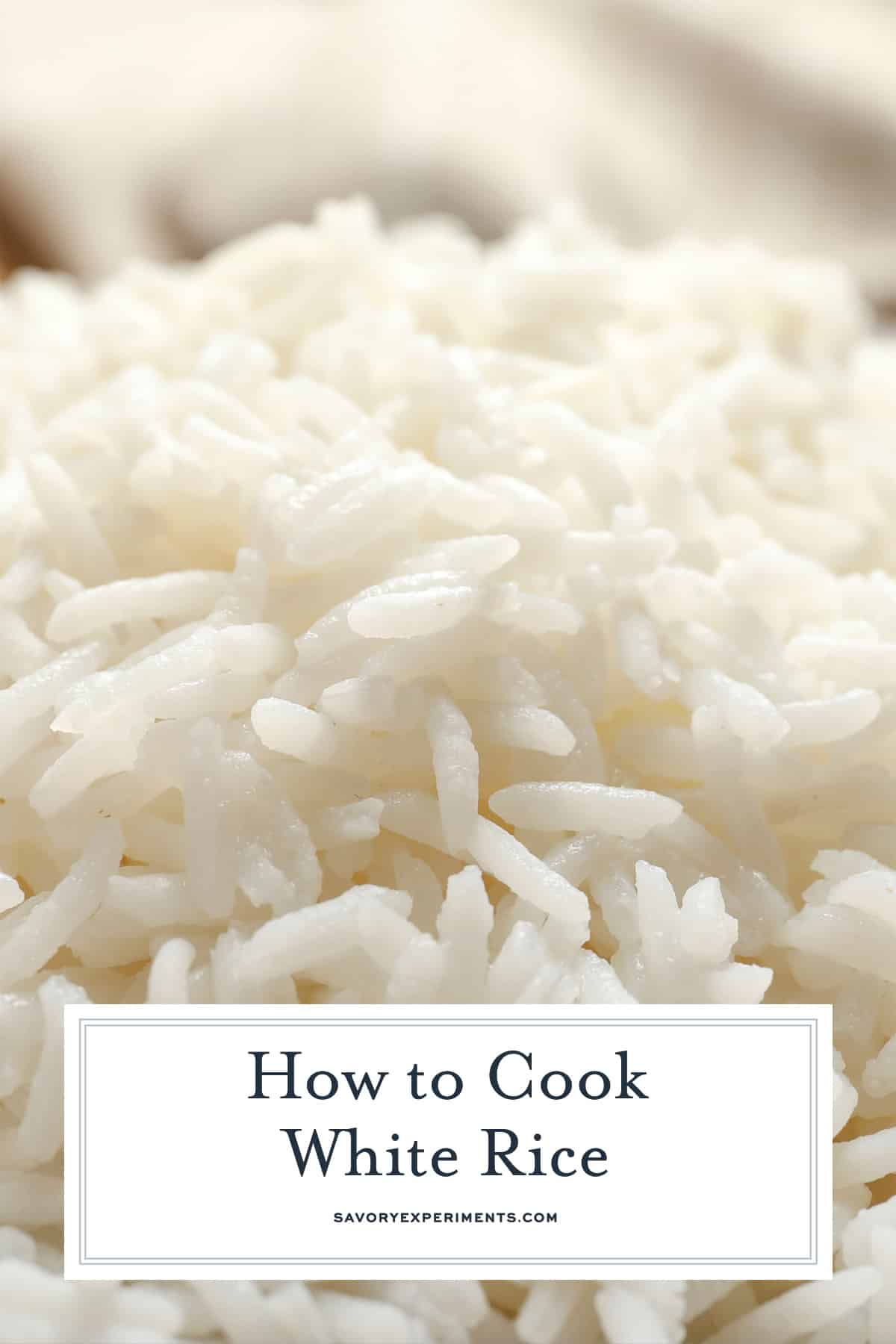
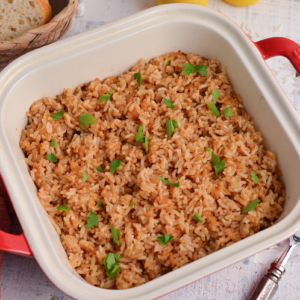
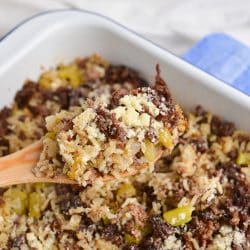

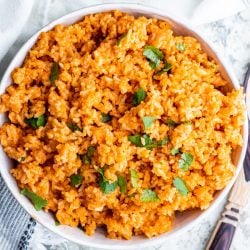
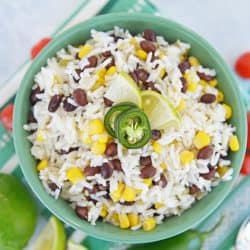
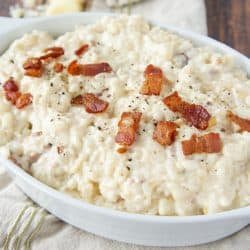
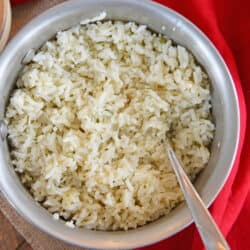
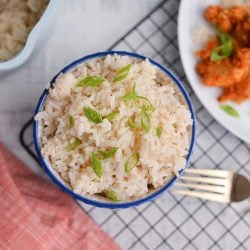
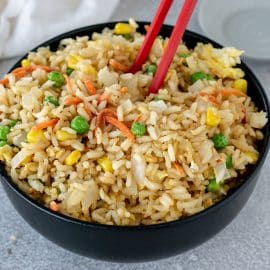
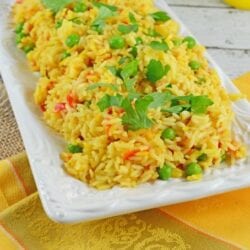
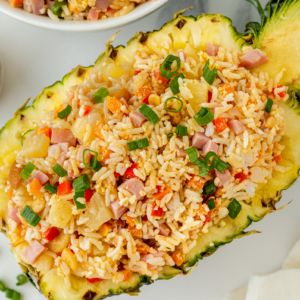
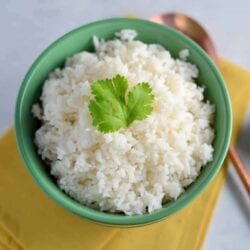
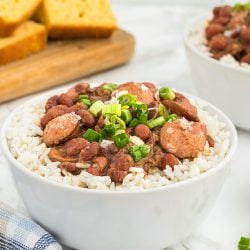
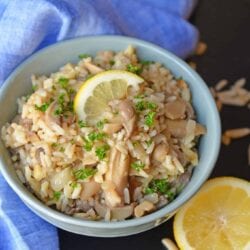
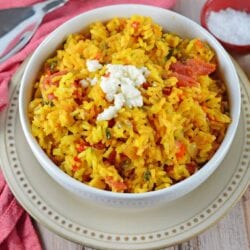
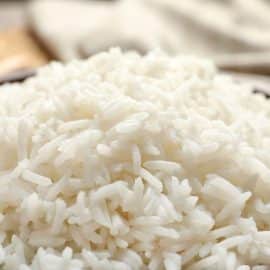

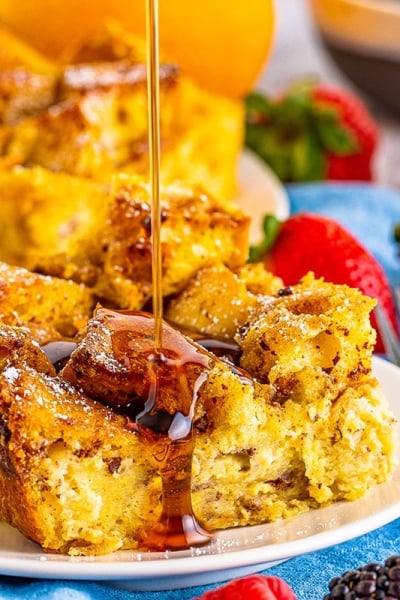
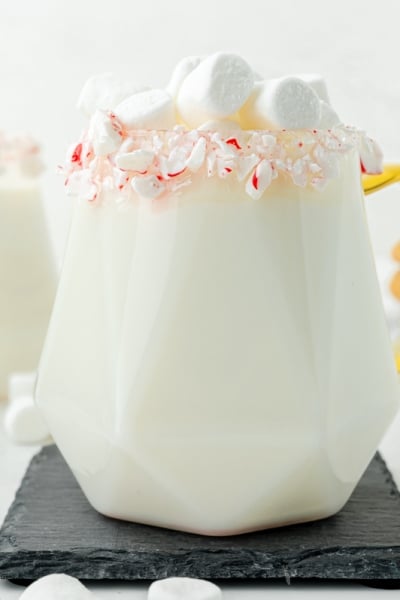

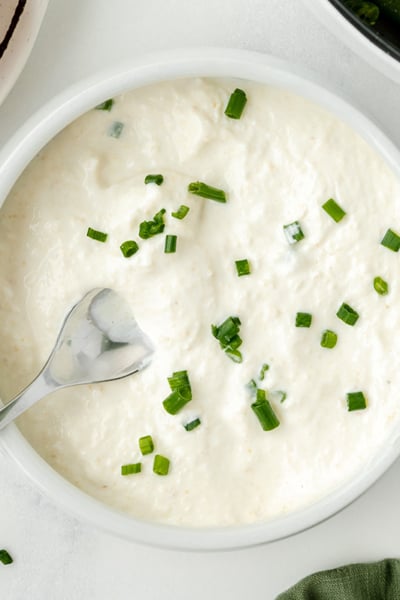













Such great information and I love the variety of recipes to use the rice! I often make it in the rice cooker, but struggle to get the texture right on the stove.
I had to make a side of rice for a dinner party last night, and thanks to your tips, my rice turned out perfectly! It was fluffy and had a nice bite too!
Great guide to cooking perfect rice, every time! Love the bonus rice recipes too, thank you!
This is perfection! I loved using butter in this recipe! Thank you for the delicious recipe!
Great tips here for cooking rice! So many people don’t realize that it needs to be rinsed to remove that extra starch. Great post!